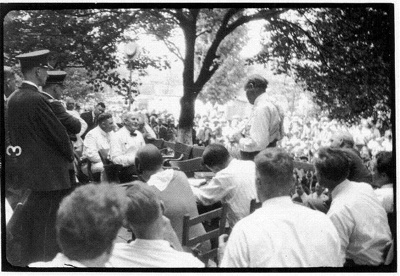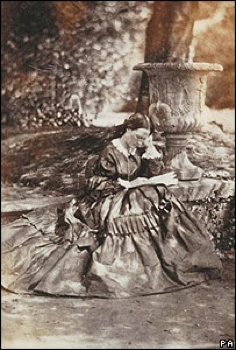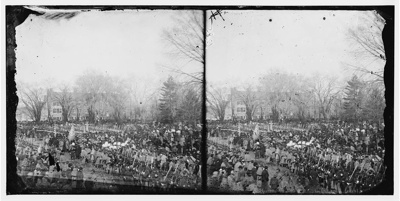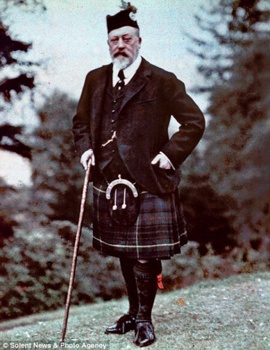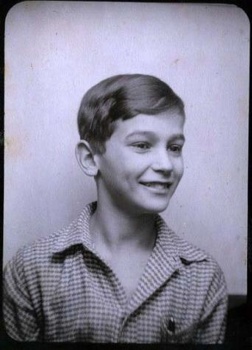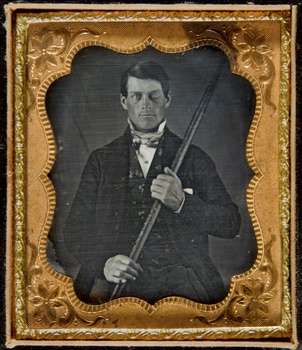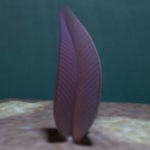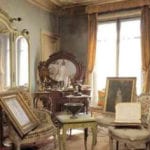 Animals
Animals  Animals
Animals  Weird Stuff
Weird Stuff 10 Weird Things People Used to Do at New Year’s
 Our World
Our World 10 Archaeological Discoveries of 2025 That Refined History
 Weird Stuff
Weird Stuff 10 Fascinating Facts You Might Not Know About Snow
 Miscellaneous
Miscellaneous Top 10 Things Crypto Was Supposed to Change & What Actually Did
 History
History 10 Huge Historical Events That Happened on Christmas Eve
 Music
Music 10 Surprising Origin Stories of Your Favorite Holiday Songs
 History
History 10 Less Than Jolly Events That Occurred on December 25
 Weird Stuff
Weird Stuff 10 Funny Ways That Researchers Overthink Christmas
 Politics
Politics 10 Political Scandals That Sent Crowds Into the Streets
 Animals
Animals 10 Species That Refused to Go Extinct
 Weird Stuff
Weird Stuff 10 Weird Things People Used to Do at New Year’s
 Our World
Our World 10 Archaeological Discoveries of 2025 That Refined History
Who's Behind Listverse?

Jamie Frater
Head Editor
Jamie founded Listverse due to an insatiable desire to share fascinating, obscure, and bizarre facts. He has been a guest speaker on numerous national radio and television stations and is a five time published author.
More About Us Weird Stuff
Weird Stuff 10 Fascinating Facts You Might Not Know About Snow
 Miscellaneous
Miscellaneous Top 10 Things Crypto Was Supposed to Change & What Actually Did
 History
History 10 Huge Historical Events That Happened on Christmas Eve
 Music
Music 10 Surprising Origin Stories of Your Favorite Holiday Songs
 History
History 10 Less Than Jolly Events That Occurred on December 25
 Weird Stuff
Weird Stuff 10 Funny Ways That Researchers Overthink Christmas
 Politics
Politics 10 Political Scandals That Sent Crowds Into the Streets
10 Fascinating Recently Discovered Photographs
Photo lists are my favorite to read and write about, so I’m always trying to think of new subject matter for a photo list that would complement the others on the site. Recently my brother discovered some old pictures of our grandfather. We never knew they existed, and it gave me the idea for this list. This list looks at some rare and hopefully interesting photographs that were uncovered in recent years along with descriptions of the photos and how they were discovered.
Taken: 1925
Discovered: 2005
In 2005 the Smithsonian Institution announced that it had some never-before published pictures of the Scopes Monkey Trial which was dubbed “The Trial of the Century,” The negatives were discovered after looking through archival material donated to the Smithsonian back in 1971. The photo shows William Jennings Bryan (seated at left) fielding questions from Clarence Darrow. The heat that summer in east Tennessee was the worst in memory, so the judge moved the trial outside the County courthouse to a cooler venue and to accommodate the enormous crowds. The proceedings were held on a platform that had been erected in front of the Rhea County Courthouse for the benefit of ministers who wanted to preach during the time of the trial.
Interesting Fact: One explanation of why this picture was never published at the time is that the trial ended the next day, and Scopes was found guilty. When Bryan died five days later, the image’s immediate news value diminished.
Taken: 1858
Discovered: 2006
Florence Nightingale is one of nursing’s most important figures. She gained worldwide attention for her work as a nurse during the Crimean War. She was dubbed “The Lady with the Lamp” after her habit of making rounds at night to tend to injured soldiers. Early photographs of Florence Nightingale are very rare because she was extremely reluctant to be photographed, partly for religious reasons and also because she regarded any personal publicity as detrimental to the causes of public health. The photo was discovered in an album of mid 19th century photographs and shows Florence sitting reading outside her family home in Embley Park, Hampshire two years after her return from the war.
Interesting Fact: Another photo of Florence Nightingale surfaced just last year. The photo was taken in 1910 ( 52 years after the one above) It’s the last photograph taken of her and shows 90 year old Florence in her bedroom at her home in South Street, London near Hyde Park. The photo was taken by Lizzie Caswall Smith, a noted studio photographer in the early 1900s who specialized in celebrity and society studio portraits. On the back of the photo Caswall Smith wrote, “Taken just before she died, house near Park Lane. The only photograph I ever took out of studio. I shall never forget the experience.” You can see the photo here.
Taken around: 1900
Discovered: 2008
I realize that a recently discovered photo of a tortoise named Jonathan is not very exciting. However, when the photo shown above was found, it backed up the claim that Jonathan is the oldest living animal on earth. Jonathan was brought to the small island of St Helena in the South Atlantic Ocean in 1882 along with three other tortoises when they were 50 years old. The photograph above was taken around 1900 and was recently discovered as part of a collection of Boer War images. It shows Jonathan, eating some grass with a Boer War prisoner and guard next to him. Jonathan was about 70 years old when this picture was taken which makes Jonathan approximately 177 years old. I know many will ask (like me) how they know for sure that Jonathan was already 50 years old when he came to the island. Others may ask how they are sure that the photo of the tortoise is really Jonathan. The truth is, I’m not sure. I found this information from several different sources so I decided to give good ol’ Jonathan the benefit of the doubt.
Interesting Fact: Locals say that despite Jonathan’s age, he still has the energy to regularly mate with the three younger females. Jonathan is owned by the St Helena government and lives in a specially built plantation on the governor’s land and is treated like a celebrity due to his legendary status. You can see a recent picture of Jonathan here.
Taken: 1865
Discovered: 2008
The Library of Congress recently discovered three new glass negatives of President Abraham Lincoln’s second inauguration. The photo above was originally mislabeled as President Grant’s inauguration ceremony. A curator discovered the photographs while reviewing a log book noticed the caption “Lincoln” in the margins. After careful comparison between the only known photos of the inauguration (just two existed) it was concluded that this photo is actually a crowd scene at Lincoln’s second inauguration. The glass stereograph above shows crowds of people attending the special event including African-American troops marching in an inauguration for the first time.
Interesting Fact: American History buffs get very excited when a new Lincoln photo surfaces. There are two recently discovered photographs of Lincoln but they have not been officially verified. This Photo was discovered this year in a personal album of President Ulysses S. Grant and apparently shows Lincoln in front of the White House. Another photograph discovered a couple of years ago might be a photo of Lincoln at Gettysburg possibly arriving at the stage on horseback. You can see every picture ever taken of Lincoln including the two questionable ones mentioned above here.
Taken: 1969
Discovered: 2009
This image was just recently published and is from a film camera that was mounted on the Apollo 11 lunar lander. I know technically this might not be considered a photograph but it’s very rare to see an astronaut’s face on the moon except in sci-fi movies so I wanted to include it in the list. The image was discovered while viewing NASA films. As Armstrong raised his gold reflexive visor (which normally obscures the astronaut’s face), his face appears just for a split second on the film. The footage was transferred into high definition format and then a single frame was made into the image above.
Interesting Fact: Because Armstrong was the guy with the camera most of the iconic pictures are of Aldrin and very few of Armstrong. This year on the 40th anniversary of the first moon landing Armstrong was presented this picture. Despite his modesty Armstrong was impressed to receive the print of himself as a souvenir.
Taken: 1848
Discovered: 2008
After a tremendous amount of research it was established that this daguerreotype photo is one of the earliest photographs of New York City. It was discovered at a small New England auction but the significance of the photograph was not known. The photo was taken around 1848 and shows a hilltop house with a lawn surrounded by a picket fence. It also shows a blurred horse-drawn carriage in the foreground. The area is now Manhattan’s Upper West Side. The photo was sold at auction this year and this time it fetched $62,500.
Interesting Fact: One of the main factors in determining the legitimacy of this photo is a note that was found in the plate’s original leather case which describes a road near the house. The note reads as follows: “This view was taken at too great a distance, & from ground 60 or 70 feet lower than the building; rendering the lower Story of the House, & the front Portico entirely invisible. (the handsomest part of the House.) The main road, passes between the two Post & rail fences. (called, a continuation of Broadway 60 feet wide.) It requires a maganifying [sic] glass, to clearly distinguish the Evergreens, within the circular enclosure, taken the last of October, when nearly half of the leaves were off the trees. May 1849. L. B.”
Taken: 1909
Discovered: 2009
This recent find could be the only color photograph of King Edward VII. The photograph shows the King in Highland costume enjoying the autumn grouse season in Scotland. The picture is an early color photography process called autochrome, patented in France in 1903. It remained the principal color photo process until the advent of color film during the mid 1930s. The photo was taken by banker Lionel de Rothschild in 1909. The autochromes were forgotten in a cupboard in Exbury House until they were discovered by de Rothschild’s grandson wrapped in old newspapers. Edward died eight months after the photo was taken.
Interesting Fact: The picture was found alongside 700 other images from the early 1900s, including this one which is probably the first color photograph of London Zoo, taken in 1910.
Taken: 1888
Discovered: 2008
This is the most publicized photograph on the list so many will be familiar with it. The photo was discovered while combing through a large family photo collection that was donated by a New England Historic Genealogical Society member. The man that donated the photograph is not sure which family member actually took the photo. He said, “I never thought much about it,” and added, “It just seemed like something no one would find very interesting.” The photo was taken in Brewster, Cape Cod, Massachusetts and shows eight-year-old Helen Keller hand in hand with her teacher Anne Sullivan. Both Keller and Sullivan indicated later in their journals that “doll” was the first word Helen Keller learned in sign language in March 1887. This photograph was taken about sixteen months later and is believed to be the only known photograph of Helen Keller holding one of her dolls.
Interesting Fact: You can watch a very interesting video here filmed 42 years after this photo was taken. It shows Anne Sullivan and Helen Keller demonstrating how Helen learned to talk and understand speech.
Taken: 1939
Discovered: 2008
In Anne Frank’s Diary Anne called Peter Schiff her “one true love.” In 1940 at the age of 11 she writes ‘Peter was the ideal boy: tall, slim and good-looking, with a serious, quiet and intelligent face. He had dark hair, beautiful brown eyes, ruddy cheeks and a nicely pointed nose. I was crazy about his smile, which made him look so boyish and mischievous.’ For more than 60 years there were no photographs known of Anne Frank’s childhood sweetheart. The photo above was discovered when a childhood friend, Ernest Michaelis, now 82, came to realize that the childhood friend that gave him this photograph (before Michaelis had left Germany for Britain) was the 13-year-old boy Anne Frank wrote about in her diary.
Interesting Fact: Peter Schiff does not reappear in the diary until January 6, 1944, after Anne had been in hiding for more than one and a half years. After she has a dream about Peter she writes ‘At that point I woke up, still feeling his cheek against mine and his brown eyes staring deep into my heart, so deep that he could read how much I’d loved him and how much I still do, and now Peter, my dearest Peter. I’ve never had such a clear mental image of him. I don’t need a photograph, I can see him oh so well.’ The photo of Peter Schiff along with a note that reads ‘A friendly memento of your friend Lutz Peter Schiff’ was donated to the Anne Frank museum by Ernst Michaelis. Like Anne Frank’s family, Peter’s family fled Germany for the Netherlands and died in Auschwitz or Bergen-Belsen.
Taken: Around 1850
Discovered: 2009
Phineas Gage was a railroad construction worker from New Hampshire and is known for his incredible survival after an explosives accident in 1848. The explosion propelled an iron rod (shown being held above) traveling at high speed to enter the side of Gage’s face, pass behind his left eye, and then exit at the top of his skull. The iron rod was recovered some 30 yards away, smeared with blood and brain. Gage recovered from the accident and retained full possession of his reason, but his wife and other people close to him soon began to notice dramatic changes in his personality. This is possibly the first recorded case suggesting that damage to specific regions of the brain might affect personality and behavior. The photo above was discovered in July 2009 and is the only known picture of Gage that exists. It was first thought to be a picture of a whaler with a harpoon and was posted on flickr under daguerreotype photographs. After seeing the picture, members of whaling groups commented that what the man was holding was not a harpoon. Another commenter then suggested that it could be a picture of Phineas Gage. When the photograph was compared to his life mask it was confirmed to be Gage around the age of 25. Gage died 11 years after the accident from a series of increasingly violent convulsions.
Interesting Fact: Phineas Gage’s brain was not subjected to any medical examination at that time, but seven years later his body was exhumed so his skull could be studied. Today Gage’s skull is on permanent display at Harvard’s Countway Library of Medicine. You can see a picture of Phineas Gage’s skull and life mask here.
